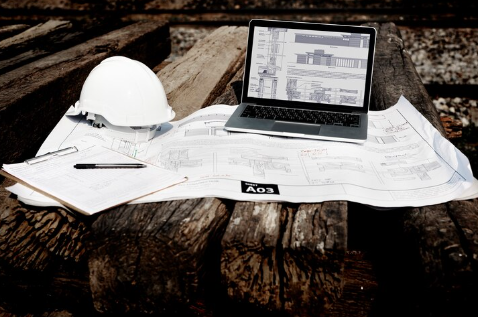The architecture and construction industries are in a perpetual state of evolution, driven by the dual engines of aesthetic innovation and the relentless pursuit of superior performance. In this landscape, new materials emerge that promise to redefine the possibilities of design, offering solutions that are not only visually striking but also environmentally responsible and structurally sound. One such material that has been generating significant interest among architects, builders, and developers is Insetprag. This term refers to a category of advanced, often composite, building materials engineered specifically for high-performance applications such as exterior cladding, facades, and interior feature walls. For professionals tasked with specifying materials that must meet stringent criteria for durability, insulation, and visual impact, understanding the properties and potential of Insetprag is becoming increasingly essential. This ultimate guide delves deep into the world of Insetprag, exploring its fundamental composition and the manufacturing technology that sets it apart from conventional options. We will examine its unparalleled performance benefits, from exceptional weather resistance and thermal efficiency to its contributions to modern aesthetic vocabularies, and provide a clear-eyed analysis of its practical considerations, including installation methodologies, lifecycle costs, and its growing role in sustainable building practices.
Defining Innovation: The Composition and Manufacturing of Insetprag
To fully appreciate the value proposition of Insetprag, one must first understand its fundamental composition and the sophisticated manufacturing processes that create it. Unlike traditional single-layer cladding materials, Insetprag is typically a composite panel system engineered for maximum performance. Its core is often a rigid insulation material, such as polyisocyanurate (PIR) or mineral wool, which provides the primary thermal break and acoustic insulating properties. This core is then sandwiched between two robust outer layers, which can be made from a variety of materials including aluminum, zinc, copper, or high-pressure laminates, depending on the desired aesthetic and performance characteristics. The manufacturing process involves bonding these layers under intense heat and pressure, creating a monolithic panel that is both incredibly strong and remarkably lightweight. This composite nature is the key to its innovation; it combines multiple functions—structure, insulation, and finish—into a single, integrated building component. The precision of factory fabrication ensures consistent quality, dimensional stability, and the ability to produce complex shapes and large formats that would be difficult or impossible to achieve with on-site construction methods. This shift from a multi-trade, on-site assembly to a precision-engineered, pre-fabricated system represents a significant advancement in building technology, reducing margin for error and elevating the overall quality of the building envelope.
The Performance Advantage: Durability, Efficiency, and Sustainability
The engineered nature of Insetprag panels translates into a suite of performance advantages that directly address the core challenges of modern construction. Firstly, their durability is exceptional. The outer metal or laminate skins are designed to be highly resistant to corrosion, UV radiation, and extreme weather conditions, from freezing temperatures to intense heat. This resistance ensures that the facade maintains its aesthetic integrity and protective function for decades, with minimal maintenance required beyond occasional cleaning, thereby significantly reducing the long-term lifecycle costs of the building. Secondly, the integrated insulation core provides a continuous thermal barrier, eliminating the thermal bridges common in traditional stick-built curtain wall systems. This dramatically improves the building’s energy efficiency, reducing heating and cooling loads and leading to substantial operational cost savings and a lower carbon footprint over the building’s lifespan. From a sustainability perspective, the efficiency gains are a major benefit. Furthermore, many Insetprag systems are designed for disassembly and recycling at the end of their life, particularly those with aluminum skins, contributing to a circular economy model in construction. The combination of longevity, energy savings, and end-of-life recyclability makes a compelling case for Insetprag as a material choice for projects targeting sustainability certifications like LEED or BREEAM.
Aesthetic Versatility: Enabling Modern Architectural Expression
Beyond its technical prowess, Insetprag has been embraced by the architectural community for its vast aesthetic potential. The material serves as a blank canvas for modern design, offering an almost limitless array of possibilities for form, color, and texture. The panels can be fabricated in large sizes, creating facades with clean, uninterrupted lines and a sleek, minimalist appearance that is highly sought-after in contemporary commercial and high-end residential architecture. The range of available finishes is extensive, including various metallic coatings in anodized or painted finishes, natural metal patinas, woodgrain effects, and custom colors. This allows architects to achieve a specific visual identity, whether aiming for the industrial chic of raw zinc, the refined elegance of a bronze tone, or a bold, statement-making color. The panels can also be profiled, perforated, or folded into three-dimensional shapes, adding depth, shadow, and pattern to the building envelope. This ability to integrate form, function, and aesthetics so seamlessly allows architects to design building skins that are not merely protective layers but integral components of the architectural expression, enabling the creation of iconic and visually dynamic structures.
Practical Considerations: Installation, Cost, and Project Integration
While the benefits of Insetprag are clear, its integration into a construction project requires careful planning and an understanding of its practical implications. The installation process is highly specialized and differs markedly from traditional cladding. It typically involves a rainscreen principle, where the panels are mounted onto a substructure attached to the primary building, creating a ventilated cavity behind the facade that manages moisture and enhances thermal performance. This requires a skilled installation team familiar with the specific panel system and its attachment details to ensure proper weatherproofing and alignment. From a cost perspective, the initial investment in Insetprag is often higher than that of conventional brick or stucco cladding. This cost includes not only the panels themselves but also the custom engineering, specialized substructure, and expert labor. However, a true evaluation must consider the total cost of ownership. The savings accrued from reduced energy bills, negligible maintenance costs, and the long lifespan of the material can make Insetprag a more economically sound choice over the life of the building. Successful project integration requires early involvement; architects and engineers must design with the panel dimensions and attachment systems in mind, and procurement must be planned well in advance due to custom fabrication lead times.
Conclusion
Insetprag is far more than a simple cladding material; it is a sophisticated building system that embodies the forward momentum of architectural technology. It successfully merges the often-competing demands of aesthetics, performance, and sustainability into a single, coherent solution. By offering unparalleled durability, superior energy efficiency, and a vast palette for creative expression, it provides architects and builders with a powerful tool to create buildings that are not only visually resonant but also responsible and resilient. While the adoption of this technology requires a shift in traditional construction practices and a higher initial investment, the long-term benefits—ranging from operational savings and reduced environmental impact to the creation of striking, modern landmarks—present a compelling value proposition. As the construction industry continues to prioritize efficiency and sustainability, materials like Insetprag are poised to move from the cutting edge to the mainstream, redefining our skylines and setting a new standard for what the built environment can achieve.
FAQ Section
Q1: Is Insetprag suitable for residential projects, or is it only for commercial buildings?
A1: While frequently used in large commercial and institutional projects due to its scale and performance, Insetprag is increasingly popular in high-end residential architecture. Homeowners and architects choose it for its modern aesthetic, incredible durability, and energy efficiency. The key is working with a designer and installer experienced with the system for a smaller-scale project.
Q2: How does the cost of an Insetprag facade compare to traditional brick or stone?
A2: The initial installed cost of an Insetprag system is typically higher than that of traditional masonry or stucco. This is due to the cost of the engineered panels, custom fabrication, and specialized installation. However, the lifecycle cost can be competitive or even lower when factoring in long-term savings on energy bills, minimal maintenance needs, and exceptional durability that avoids replacement costs.
Q3: Can Insetprag panels be repaired if they are damaged?
A3: Yes, one of the advantages of a panelized system is repairability. Individual panels can be replaced without dismantling large sections of the facade. Most manufacturers provide specific repair protocols and can supply matching replacement panels. For minor damage to certain finishes, touch-up kits may be available.
Q4: Does Insetprag contribute to green building certification?
A4: Absolutely. Its contributions are multi-faceted. The superior thermal insulation significantly improves energy performance, a major category in systems like LEED. Its long lifespan and low maintenance needs contribute to Materials and Resources credits. Furthermore, if the panels use recycled content and are recyclable at end-of-life (like aluminum ones), they further support a project’s sustainability goals.
Q5: How long does an Insetprag facade last?
A5: A properly designed and installed Insetprag facade is an extremely long-lasting building component. The expected service life is typically 40 years or more. The durable outer skins are designed to withstand decades of exposure to the elements with minimal degradation, and the insulation core is stable and does not settle over time like some cavity insulations.


